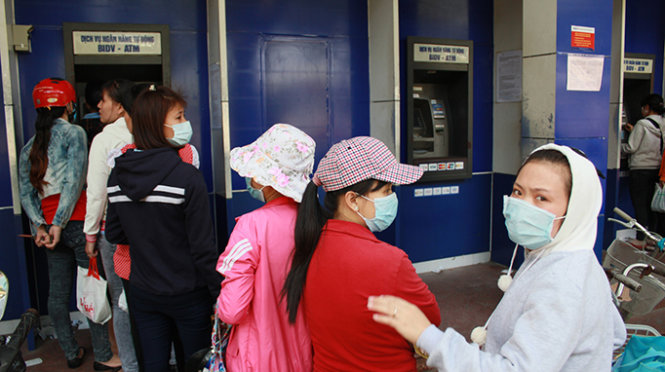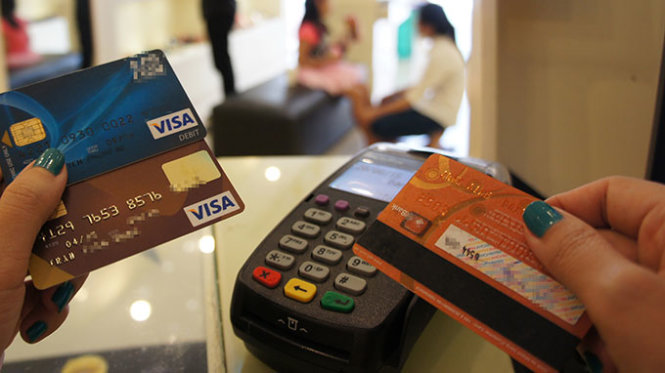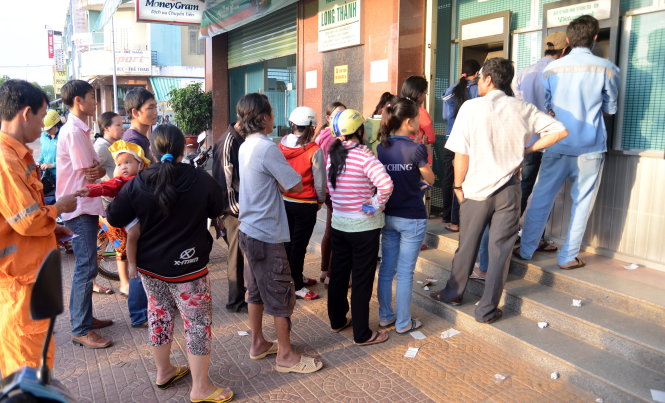While going ‘cashless’ is a trend being embraced by countries around the world, Vietnam’s bank branches and ATMs remain under pressure as most locals still prefer physical banknotes in their pockets.
Many organizations and businesses, both public and private in Vietnam, began paying their employees via bank transfers nearly ten years ago, but many still withdraw their entire pay packet in order to have cash for daily use.
According to the State Bank of Vietnam, the Southeast Asian country had more than 121 million registered bank cards, 90 percent of which are ATM cards, as of the end of June 2017, but cashless payments remain unfamiliar to many Vietnamese.
Long lines of people queuing in front of ATM booths, especially on salary days - normally the first five days of a month - has become a familiar scene in Vietnam.
Cash-based payments are a waste
Banking experts say the habit of sticking to cash will result in pressure and even wastage for credit institutions.
It costs banks an average of US$20,000 to install an ATM, and a significant amount of money for its operation, maintenance, security and other costs, according to bank card expert Tran Quang Thoai.
 |
| People queue to withdraw money at an ATM booth. Photo: Tuoi Tre |
As of June 2017, Vietnam had 17,319 working ATMs across the country, meaning total investment for the machines topped some VND8 trillion ($352.42 million), plus annual maintenance costs of nearly VND1 trillion ($44.05 million), according to the central bank.
While people receive their salaries via bank transfers, the long-held habit of withdrawing cash from ATMs means banks are forced to continue to set aside huge resources for the machines, according to the Vietnamese association of bank cards.
Vu Vinh Phu, a former deputy director of the Hanoi trade department, said a cash-based economy would result in huge wastages in the cost of printing, circulating and storing banknotes.
“Cash-based payments also allow businesses to evade taxes by not issuing receipts,” he added.
Change needed
While many businesses and services offer discounts for payments by card, not many people are comfortable with it.
Experts say banks should work harder to expand their point of sale networks and encourage more customers to use cards, instead of cash, for payment.
 |
| A woman uses credit cards for payment. Photo: Tuoi Tre |
Moreover, the government should encourage cashless payments by reducing corporate taxes for service providers that accept cards and value-added taxes for those who pay by card.
Changes are necessary as people who attempt to go cashless have complained that it is not easy to eradicate the need for physical banknotes completely.
For instance, Luu Hai Yen, a Hanoi resident, said she had to pay a 0.03 percent surcharge when clearing a VND12 million ($530) flight purchase by card.
The ticket agent said the fee was to cover its machine installation and maintenance expenses.
Khanh, a Ho Chi Minh City resident, said she always prefers to pay by card but not all service providers accept cashless payments.
“They still want to receive cash ‘for safety’s sake’,” Khanh said, adding that some businesses remain afraid of card fraud and insist on receiving cash.
Like us on Facebook or follow us on Twitter to get the latest news about Vietnam!



















































